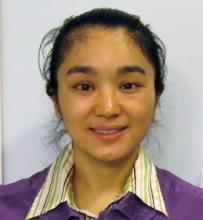SAN DIEGO – Despite growing use of chemotherapy in elderly patients with acute myeloid leukemia, more than half still did not receive any chemotherapy between 1997 and 2007, according to an analysis of 6,888 cases in a large national database.
Median survival was significantly longer in patients who received chemotherapy than in those given best supportive care only, Yanni F. Yu reported at the annual meeting of the American Society of Hematology. In all, 56% of elderly acute myeloid leukemia (AML) patients did not receive chemotherapy, however, and median survival as well as chemotherapy use declined with advancing age.
"Older patient with AML generally have a poor outcome," said Ms. Yu, manager of health economics and outcomes research at Boehringer Ingelheim Pharmaceuticals. "If they are not eligible for intensive chemotherapy, the median survival is usually less than 3 months," she noted.
Previous studies in the elderly AML population showed that the percentage of chemotherapy treatment increased from 29% in 1991 to 38% in 1999, Ms. Yu said. To determine more current treatment trends in this patient population, she and her associates evaluated data from Medicare patients aged 65 years and older who had a new AML diagnosis between Jan. 1, 1997, and Dec. 31, 2007, recorded in the Surveillance, Epidemiology, and End Results (SEER) cancer registry.
The analysis was limited to fee-for-service Medicare patients who had at least 6 months of pre-AML Medicare Part A and B benefit coverage. The researchers excluded patients who had evidence of another tumor in the SEER registry before the first AML diagnosis and those who had a diagnosis of a solid tumor within 6 months pre-AML in Medicare claims.
Eligible patients were followed from initial AML diagnosis until their date of death or the end of the observation period, which was Dec. 31, 2009.
The researchers evaluated the type of care received, chemotherapy treatment patterns, and mortality and patient survival separately for AML cases diagnosed in three time frames: 1997-1999, 2000-2003, and 2004-2007. They performed multivariate logistic regression to assess predictors of receipt of chemotherapy, including patient demographics, comorbidities, and year of AML diagnosis.
A total of 6,888 patients met the study criteria. Their mean age was 78 years, 48% were women, 88% were white, and 43% received chemotherapy at any point after diagnosis. The use of chemotherapy increased slightly over time, from 40.7% in 1999-2000 to 42.3% in 2000-2003 and 46% in 2004-2007.
More than half of patients (56%) received only best supportive care post diagnosis, although the percentage decreased slightly over time. Among patients receiving best supportive care, rates of hospice care increased from 30.3% in 1997-1999 to 36.4% in 2000-2003 and 42.3% in 2004-2007.
Among patients who received chemotherapy, the use of antibiotics increased substantially over the three time periods (11.1%, 14%, and 29.6%, respectively), as did the use of antifungals (1.3%, 3.1%, and 12.4%), indicating more patients were in need of prophylaxis or treatment for chemotherapy-related infections.
Older AML patients received strikingly less chemotherapy with advancing age. For example, 66.3% of patients aged 65-74 years received chemotherapy, compared with 39.2% of those aged 75-84 years and 14.8% of those aged 85 years and older. The proportions of patients receiving antibiotics and antifungals also decreased with advancing age.
Regression analysis showed a similar association between age and chemotherapy, revealing that the strongest predictor of not receiving chemotherapy was older age, with an odds ratio of 0.12 for being aged 85 years or more and an OR of 0.42 for being aged 75-84 years.
The overall 30-day mortality rate was 20.5%, and the 60-day mortality rate was 42.8%. Median survival among all patients was 2.6 months, and it decreased with advancing age from 4.5 months to 2.4 months to 1.6 months for those aged 65-74 years, 75-84 years, and 85 years and older, respectively.
Furthermore, although nearly all patients had died during follow-up, median survival was much longer in patients receiving chemotherapy than in those receiving best supportive care only. This was true across all age groups, with 8.0 vs. 1.5 months reported in those aged 65-74 years, 5.3 vs. 1.7 months in those 75-84 years, and 3.8 vs. 1.4 months in those 85 years and older.
Ms. Yu acknowledged certain limitations of the study, including the fact that results may not be applicable to younger patients or to those covered by a managed care Medicaid plan.
In addition, "Medicare Part D information was not included since information on prescription claims was available only after 2007," she said. "Also, no information was available on the chemotherapy agents or the doses received in the inpatient or outpatient settings. Patient performance status was also unavailable."


